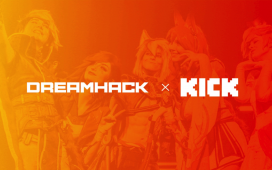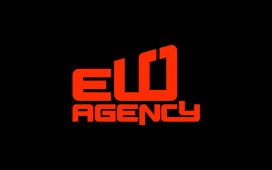Esports Insider guest columnist Steven Salz, the Co-founder and CEO of esports sportsbook and media company Rivalry, writes for ESI to discuss the importance of identifying trends when building a brand.

Internet culture is now mainstream culture. Whatever takes place online is reflected in the physical world, and vice versa, with the two realities nearly indistinguishable.
It’s important to note that I didn’t say the ‘real world’ as a distinction from online. Both spaces are the real world, and releasing this stigma is critical to unlocking brand equity, whether as a company or individual.
We are interfaced and symbiotic with the internet. This is something that has been bubbling to the surface for some time now, and I think about it often. I wait for these moments where the internet breaks the accepted narrative. Case and point, meme stocks.
Gaming and esports represents a critical piece of this story. Major game engines such as Unity and Unreal are creating the technical backbone of this new merged reality. However, perhaps a more interesting story is the impact this merger is having on culture. Specifically, what does it mean to build a consumer product and brand in this new world?
In the late 80’s and 90’s the NBA brought sneaker and hip hop culture to the mainstream. NBA players were the bridge between those two worlds; they were its tastemakers. In my opinion, Nelly’s song ‘Air Force Ones’ personifies that moment in time.

RELATED: Rivalry secures $22m infusion ahead of direct listing
Today’s world sees internet culture as mainstream, gaming as the bridge, and the sector’s professional players and content creators as the new tastemakers.
In late 2019, Star Wars debuted a trailer for Rise of Skywalker in Fortnite. Recently a Gucci bag in Roblox resold for 350,000 Robux, or roughly $4,115. The same purse in real life costs $3,400.
Seraphine, a synthetic influencer created by Riot Games for its League of Legends title, is part of the virtual K-Pop group K/DA. The playable character has amassed nearly 500,000 Instagram followers. Similarly, a 19-year-old synthetic influencer named Miquela just reached 3m Instagram and TikTok followers. Miquela is forever 19, and digitally rendered into real life, eating at real restaurants, promoting real consumer products, and being featured in Vogue. Of course, Miquela also released NFT’s.
Rivalry also released NFT’s, or NFTrophy’s as we defined them, and we gave them away for free. This is all part of the same story. The merger of digital and physical worlds.
The heartbeat of this new meta-layered world is the internet, and any consumer brand needs to understand this ecosystem deeply to thrive. Movie trailers in Fortnite, Gucci bags in Roblox, synthetic influencers promoting real restaurants, and Rivalry releasing NFTrophy’s is meta-layer marketing. Mr. Beast launching MrBeast Burger, which has launched in 100’s of locations through ghost kitchens, is culture creating and defining. He is a tastemaker.

Alexandria Ocasio-Cortez (AOC) playing Among Us with popular gaming influencers such as Pokimane and Dr. Lupo with nearly 400,000 concurrent viewers on Twitch is meta-layer marketing. AOC is a tastemaker defining what political communication looks like for the next generation.
It all connects, and gaming is the common thread. This is the signal for brands. This is why there are generic statements about gaming creators and esports being the best way to reach the next generation of consumers. These are young Millennials and Gen Z, or more simply those under the age of 30 who now represent upwards of 40 percent of the global population. However, more importantly, it’s about doing it right. The examples above are cases of well-executed brand marketing in this new reality.
At Rivalry, everything we do tries to live in-between digital and physical, whilst also riding the wave as the two worlds begin to merge together. To ride it, you need to first see it and understand it to know where to get on.
For example, we built our own game of chance in the Unity engine called Rushlane, which is a bubblegum cyberpunk-themed multiplayer race that mixes the visual style of popular games into a monocycle race that up to 25 players can participate in together. The top 5 winners split the pot. Our marketing will shortly include a fully digitally rendered underground bar that we created in the Rushlane universe where our partners from all around the world will hang out together, watch races, and talk shop.
We are starting to build game lore in the sports betting industry, a sector that has historically not thought that way about its products. More broadly our brand Rivalry is based on a concept we call Digital DIY. We took everything we love about the internet and shoved it right into Photoshop. A touch of stock imagery, and a dash of memes combined with thoughtfully designed grids, typography and instantly recognisable colours with images created with all the tools Photoshop has to offer. The Stonks guy is our spirit animal.

RELATED: G2 Esports announces major adidas partnership
The recent partnership announcement between G2 Esports and Adidas is a great example of modern-day marketing in the esports sector. In my view, the campaign sees Adidas adapt its legacy brand to appeal to the next generation of consumers – using G2 Esports as its bridge. The announcement was Anchorman meets Lord of the Rings meets gaming draped in a popular neon aesthetic. Moreover, it was thoughtfully meme-worthy from top to bottom.
I don’t know what the next ‘Air Force Ones’ song will sound like that defines this consumer culture, but maybe Corpse Husband’s singles ranking on the top 100 charts in multiple countries is a start. An anonymous internet personality that has played Among Us with Stranger Things stars and other gaming creators on Jimmy Fallon. Another tastemaker demonstrating what a brand looks like in today’s world.
Esports and gaming content broadly is one of the best ways to tap into the next generation. The brands that will survive and hopefully thrive are already building and executing on this strategy.
Mature brands like Gucci, newer brands like Mr Beast, and my personal belief, Rivalry, understand what it means to connect in the fully digital and borderless world of the internet. How to create a sense of clout and community through excellent products that traverse both the digital and physical worlds. How to leverage gaming and its creators to create organic brand-building opportunities as they are the tastemakers now.
Doing this right creates incredible leverage and exists in the space where the future is being built, and that to me is the only place to be.













